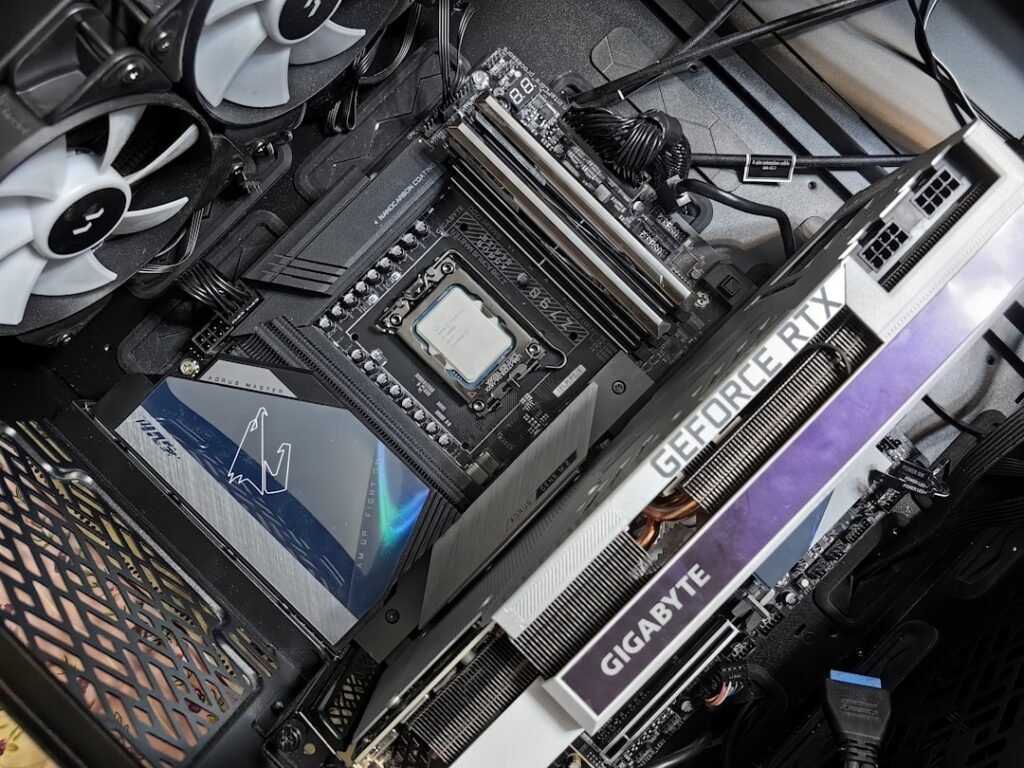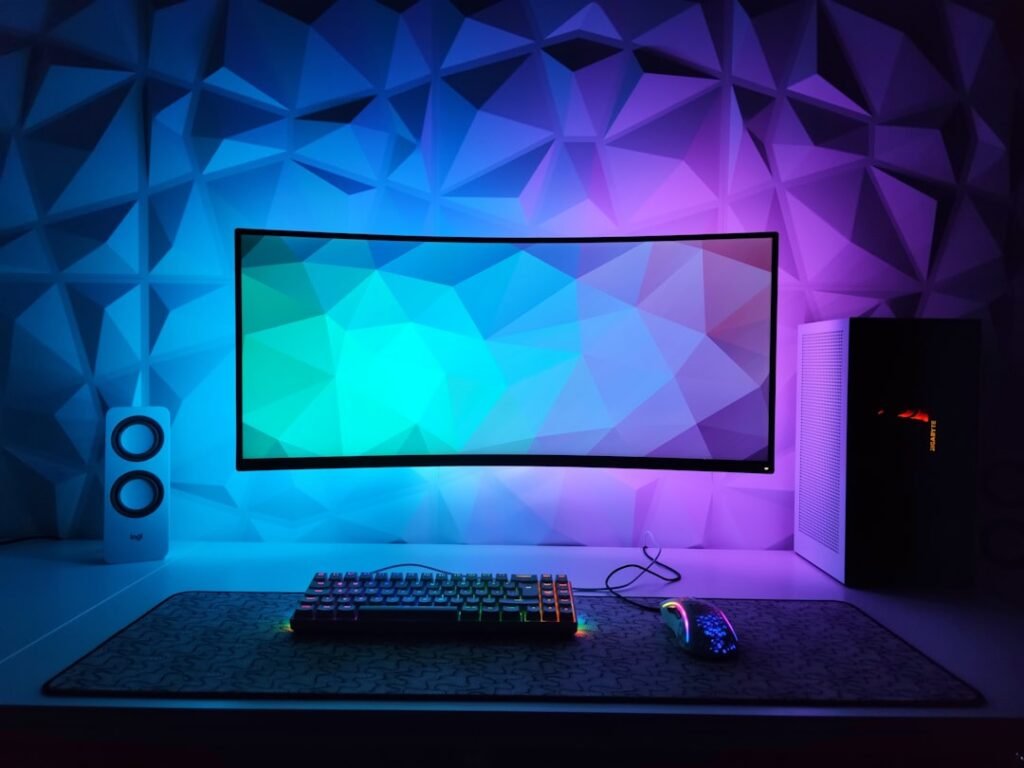The architecture of AMD graphics cards is a complex yet fascinating subject that underpins the performance and capabilities of their products. At the heart of AMD’s offerings lies the Graphics Core Next (GCN) architecture, which has evolved significantly over the years. GCN was designed to optimize parallel processing, allowing for improved performance in both gaming and professional applications.
This architecture enables multiple threads to be processed simultaneously, making it particularly effective for tasks that require heavy computational power, such as rendering high-resolution graphics or performing complex calculations in scientific simulations. In recent years, AMD has introduced the RDNA (Radeon DNA) architecture, which marks a significant departure from GCN. RDNA focuses on enhancing performance per watt, which is crucial for modern gaming and high-performance computing.
This architecture incorporates features such as a new compute unit design, improved cache hierarchy, and support for advanced rendering techniques like ray tracing. By prioritizing efficiency and performance, RDNA has positioned AMD as a formidable competitor in the graphics card market, appealing to gamers and professionals alike who seek high-quality visuals without compromising on power consumption.
Key Takeaways
- AMD architecture is designed for high performance and efficiency, with features like RDNA 2 and Infinity Cache.
- Overclocking AMD video cards can be done through software tools like AMD Radeon Software or third-party applications.
- Optimizing graphics settings for AMD video cards involves finding the right balance between visual quality and performance.
- AMD software like Radeon Software Adrenalin can be used to enhance performance through features like Radeon Boost and Radeon Anti-Lag.
- Maintaining and cooling AMD video cards is crucial for maximum performance, with techniques like regular cleaning and proper airflow.
Overclocking Techniques for AMD Video Cards
Getting Started with Overclocking
To begin, users should familiarize themselves with software tools such as AMD’s Radeon Software Adrenalin Edition, which provides a user-friendly interface for monitoring temperatures and adjusting clock speeds.
The Incremental Approach to Overclocking
One effective technique for overclocking is the “incremental approach.” This method involves gradually increasing the core clock speed in small increments while continuously testing stability through benchmarking tools or demanding games. It is crucial to monitor temperatures during this process, as overheating can cause thermal throttling or permanent damage to the GPU.
Optimizing Performance and Avoiding Risks
Once users find a stable overclock, they can also experiment with memory clock adjustments to further enhance performance. Ultimately, successful overclocking requires patience and a willingness to experiment while keeping an eye on system stability and temperatures.
Optimizing Graphics Settings for AMD Video Cards
To fully harness the capabilities of AMD video cards, optimizing graphics settings is essential. Many gamers may be tempted to crank up all settings to maximum, but this approach can lead to suboptimal performance and reduced frame rates. Instead, users should consider a balanced approach that prioritizes both visual fidelity and smooth gameplay.
One effective strategy is to utilize AMD’s Radeon Software Adrenalin Edition, which offers various presets tailored for different gaming experiences. These presets can help users find a sweet spot between performance and quality based on their specific hardware configuration. Another critical aspect of optimization involves adjusting individual graphics settings within games.
For instance, settings such as anti-aliasing, texture quality, and shadow resolution can significantly impact performance. Lowering these settings can lead to substantial frame rate improvements without sacrificing too much visual quality. Additionally, enabling features like AMD’s FidelityFX Super Resolution (FSR) can provide a significant boost in performance by upscaling lower-resolution images while maintaining sharpness and detail.
By carefully fine-tuning these settings, gamers can achieve an optimal balance that enhances their overall gaming experience.
Utilizing AMD Software for Performance Enhancement
| Software | Performance Enhancement |
|---|---|
| Radeon Software | Improved graphics performance |
| AMD Ryzen Master | Optimized CPU performance |
| AMD StoreMI | Enhanced storage performance |
AMD provides a suite of software tools designed to enhance the performance of their video cards, with Radeon Software Adrenalin Edition being the cornerstone of this ecosystem. This software not only allows users to monitor their GPU’s performance but also offers a range of features aimed at optimizing gaming experiences. One notable feature is the Performance Tuning section, where users can adjust clock speeds, voltages, and fan curves to achieve their desired performance levels.
This level of customization empowers users to tailor their graphics card’s behavior according to their specific needs. In addition to performance tuning, Radeon Software includes features like Radeon Anti-Lag and Radeon Boost, which are designed to reduce input lag and improve responsiveness during gameplay. These technologies work by optimizing frame delivery and dynamically adjusting resolution during fast-paced action sequences.
Furthermore, the software’s built-in recording and streaming capabilities allow gamers to capture their gameplay effortlessly, making it easier than ever to share highlights with friends or on social media platforms. By leveraging these tools, users can maximize their AMD video card’s potential while enjoying a seamless gaming experience.
Maintaining and Cooling AMD Video Cards for Maximum Performance
Proper maintenance and cooling are vital components in ensuring that AMD video cards operate at peak performance levels over time. Dust accumulation can hinder airflow and lead to overheating, which may result in thermal throttling or even hardware failure. Regularly cleaning the GPU’s fans and heatsinks is essential for maintaining optimal temperatures.
Users should consider using compressed air to blow out dust from the card’s exterior and ensure that the system’s case has adequate airflow to facilitate cooling. In addition to routine cleaning, investing in an effective cooling solution can significantly enhance performance. Many aftermarket coolers are available that offer superior thermal management compared to stock solutions.
These coolers often feature larger heatsinks and more efficient fans that can dissipate heat more effectively. For those who are more adventurous, custom liquid cooling setups can provide exceptional cooling performance while also adding an aesthetic touch to the build. By prioritizing maintenance and cooling solutions, users can ensure that their AMD video cards continue to perform optimally for years to come.
Upgrading and Installing the Latest Drivers for AMD Video Cards
Importance of Up-to-Date Drivers
Keeping drivers up-to-date is crucial for maximizing the performance of AMD video cards. Drivers serve as the communication bridge between the operating system and hardware, ensuring that games and applications run smoothly.
Regularly Checking for Updates
AMD frequently releases driver updates that include optimizations for new game titles, bug fixes, and enhancements that can significantly improve performance. Users should regularly check for updates through the Radeon Software Adrenalin Edition or the official AMD website to ensure they are benefiting from the latest advancements.
Installing New Drivers
The installation process for new drivers is straightforward but requires attention to detail.
Afterward, downloading the latest drivers from AMD’s website or through Radeon Software ensures that users have access to the most recent features and optimizations.
Benefits of Up-to-Date Drivers
Following these steps not only enhances gaming performance but also contributes to system stability by ensuring compatibility with new software releases.
Benchmarking and Testing AMD Video Card Performance
Benchmarking is an essential practice for evaluating the performance of AMD video cards under various conditions. By running standardized tests using benchmarking software such as 3DMark or Unigine Heaven, users can obtain quantitative data on their GPU’s capabilities. These benchmarks provide insights into frame rates, thermal performance, and overall system stability under load.
Additionally, comparing benchmark results with other users’ scores can help gauge how well a particular card performs relative to similar models. Beyond synthetic benchmarks, real-world testing through gameplay is equally important. Users should test their video cards across different titles and settings to understand how they perform in various scenarios.
Monitoring tools integrated into Radeon Software allow users to track frame rates, temperatures, and usage statistics during gameplay sessions. This data can be invaluable for identifying bottlenecks or areas where further optimization may be necessary. By combining synthetic benchmarks with real-world testing, users can develop a comprehensive understanding of their AMD video card’s performance capabilities.
Troubleshooting and Resolving Performance Issues with AMD Video Cards
Despite their robust design and capabilities, AMD video cards may occasionally encounter performance issues that require troubleshooting. Common problems include low frame rates, stuttering during gameplay, or graphical artifacts appearing on-screen. The first step in resolving these issues is to ensure that drivers are up-to-date and that all software settings are correctly configured.
Sometimes, reverting back to a previous driver version may resolve compatibility issues with specific games or applications. If problems persist after updating drivers and optimizing settings, users should investigate potential hardware issues. This includes checking power connections to ensure that the GPU is receiving adequate power from the PSU (Power Supply Unit) and verifying that the card is properly seated in its PCIe slot.
If all else fails, reaching out to AMD support or consulting community forums can provide valuable insights from other users who may have faced similar challenges. By systematically addressing these issues, users can restore their AMD video card’s performance and enjoy a seamless gaming experience once again.
FAQs
What are AMD video cards?
AMD video cards are graphics processing units (GPUs) manufactured by Advanced Micro Devices, Inc. These GPUs are designed for use in desktop computers, laptops, and other devices to handle graphics and video processing tasks.
What are the benefits of using AMD video cards?
AMD video cards are known for their high performance, advanced graphics capabilities, and support for the latest technologies such as virtual reality and 4K gaming. They also offer competitive pricing and a wide range of options to suit different needs and budgets.
What are some popular AMD video card models?
Some popular AMD video card models include the Radeon RX 6000 series, Radeon RX 5000 series, and Radeon RX Vega series. These cards are known for their powerful performance and support for features like AMD FreeSync technology.
What is AMD FreeSync technology?
AMD FreeSync is a technology that synchronizes the refresh rate of a compatible monitor with the frame rate of a supported AMD graphics card. This helps to reduce screen tearing and stuttering, resulting in a smoother and more immersive gaming or viewing experience.
Are AMD video cards compatible with all computers?
AMD video cards are compatible with a wide range of computers, including those running Windows and Linux operating systems. However, it’s important to check the system requirements and compatibility of a specific AMD video card with your computer before making a purchase.
How do AMD video cards compare to other GPU brands?
AMD video cards are known for their competitive performance and value compared to other GPU brands such as Nvidia. They offer a strong alternative for users looking for high-quality graphics performance at a more affordable price point.




